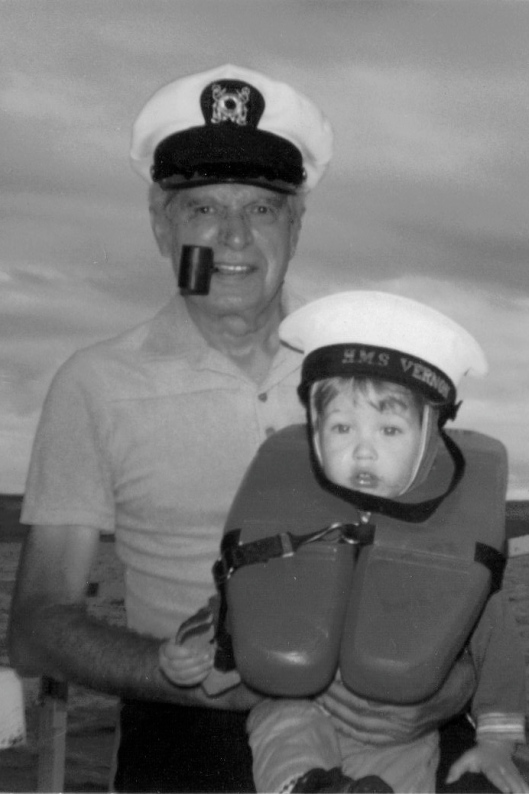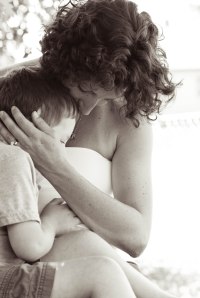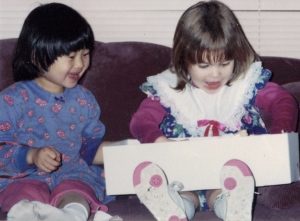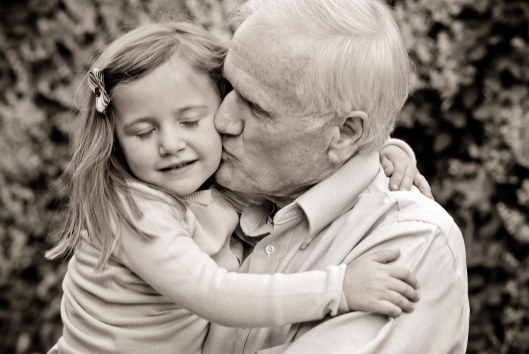Songs/Verses/Nursery Rhymes/Fairy Tales/Stories/Puppet Shows
Once Upon a Time…….Magical words to the ears of a child! A great surge of excitement runs through me just thinking about reading books aloud to my school and home children and telling them tales that I learned by heart or were homespun. Looking into a child’s eyes and seeing how enraptured they were with the telling of a tale was one of the most rewarding experiences of being an early childhood teacher. Cuddling up with one of my babies at home for a story was a wonderful time to be together, share warmth and to communicate about more than the eye can see. Over time, telling the children little stories all day long became a joyful way of communicating. When my oldest, a son, first came and I wasn’t use to making up stories, I just told him about events in my life as one of twelve children. He thought I was making up these stories because his lifestyle was so different than mine. When I told them that these events happened to me, he said, “No way. The mom in the story doesn’t sound like Grandma!” Well, as you can imagine, the Mama of 12 children might react differently than the Grandma of a little prince. When we visited, my Mom used to greet my son with, “What will you have to eat?” and he would say, “The usual,” which was a full breakfast. She and my Dad had plenty of time to read my son stories or spin a tale for him.
My love for books and stories, and the love of reading, most likely came from my parents. My Mom was very playful and imaginative and I remember being no older than 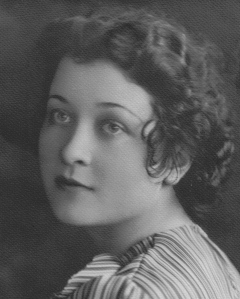 three when she used to sing songs “Let’s all sing like the birdie sings” in her high and beautiful voice and tell me little tales (how the birdie ate some of the cheese off my lunch plate-hmmm). She lived to be 88 and the last faculty she had at the end of her life was to sing songs and recite nursery rhymes, “Hey diddle-diddle, the cat and the fiddle,” she would say with great joy. Another favorite was , “Little boy blue come blow your horn.” What she learned first was the last to leave. My father was a big-time story-telling Irishman. He didn’t tell us anything that wasn’t all wrapped up in a huge delightful tale full of adventure and humor. Julio Apodaca and Buffalo Chavez were two of the favorite characters of his stories. He kept up this story telling for nearly 95 years.
three when she used to sing songs “Let’s all sing like the birdie sings” in her high and beautiful voice and tell me little tales (how the birdie ate some of the cheese off my lunch plate-hmmm). She lived to be 88 and the last faculty she had at the end of her life was to sing songs and recite nursery rhymes, “Hey diddle-diddle, the cat and the fiddle,” she would say with great joy. Another favorite was , “Little boy blue come blow your horn.” What she learned first was the last to leave. My father was a big-time story-telling Irishman. He didn’t tell us anything that wasn’t all wrapped up in a huge delightful tale full of adventure and humor. Julio Apodaca and Buffalo Chavez were two of the favorite characters of his stories. He kept up this story telling for nearly 95 years.
I am sure that my mother didn’t sit by each of us at night and read books the way that more modern parents do as there were 12 of us, but I remember our large nursery rhyme book, so well worn, and when my parents were purging their belongings, I took it home. It is missing the covers and some of the pages but I love that old book, full of rhymes that I know by heart and the bits of fine English artwork that I looked at over and over again as a child and imagined I were in the scenes. I knew that reading books was a very good thing to do since my parents and many of my older brothers and sisters were voracious readers and I knew I would be as well. Imitation is how young children learn and by watching my parents I learned to treat books well, and the few that I received as my own were cherished. In my preschool classes I had some fine books and some board books. The board books were left out for the children to use anytime (sometimes as building tools) but I supervised the use of the finer books and taught the children how to turn the pages carefully. Even in this age of kindles, holding a fine book in hand and carefully turning the pages fills the soul with deep joy. (I actually was given a kindle as a gift, and late at night when my old eyes can’t focus, the large, well-lit print can be helpful.) I actually don’t remember learning to read but my siblings and I played teacher a lot and reading was learned somewhere along the way before first grade. The delight of language was almost, but not quite, broken in parochial school by all the mimeographed sheets that were churned out and given to the little first graders to “circle the correct word”. But the love of reading books and telling stories surpassed all obstacles, lives in me, and I have tried to pass it on to my school children and my own children.
In some circles the nursery rhymes and lullabies have been updated to be more politically correct. When I read these versions I want to laugh. The original versions are so musical and rich with wonderful language. I have used them a great deal in my preschool, kindergarten and parent-child classes. Very often in the parent-child classes, I would tell a very small tale, say about Spring, and then sing a nursery rhyme, Mary Had a Little Lamb in this case, a few times while walking around the group of sitting children, having a lamb marionette dance by. The children would all wave their arms around and say/sing the words that they knew. The lamb might sneak a taste of their oatmeal or give them a kiss on the cheek which delighted the children. After 3 or 4 tellings of the same story I would try to change the tale. The toddlers would like the new tale but would request the animal in the prior story to come visit as well. Usually I was the one who tired of the story – not the children. You know how they LOVE their favorite tales to be told again and again.
The nursery rhymes and lullabies are full of rich and melodic language and if you think about it, some of them have deeper meanings. Rock-a-bye baby on the treetop is about incarnating into the world (and into one’s body) and that is why changing the end, “and down will come baby, cradle and all” to something where the baby doesn’t “fall” is a little silly, since we all “fall” to earth with our cradles (our bodies). Children live in pictures and don’t take these things literally. I have never had a child at school say, “I don’t like that song because the baby falls,” because they see their pictures in their minds and if we grownups sing it in a lovely, loving way, the child will grow in love and protection by hearing our voices. Perhaps as the child grows older they may question things. I remember when I was a little older wondering why the girls cried when Georgie Porgie kissed them. If your child does make a statement about not wanting the baby to fall, you can tell them that the babies are all fine. As the children grew older in my kindergarten classes, sometimes when they were resting I would read good poetry, with language that was “way over their heads” like Song of Hiawatha. I would read the poems in a calm, melodic voice and you could hear the hush over the classroom like a wave of water whooshing over them. They would breathe so rhythmically like the words spoken – Very health-giving for their bodies and souls! Did they understand every word in the poem (or nursery rhyme or fairy tale)? No, but they got the gist of it, it built their vocabularies and they could hear how beautiful language could be. I think it was Einstein who said, “If you want your children to be intelligent, read them fairy tales.” I would only add, “and nursery rhymes and poetry.”
When your child is somewhere between one and two, you can start telling them little tales that you make up. Using a visual prop to look at – a little toy or puppet, is a lot of fun at this age and helps them to focus. The stories should be simple and don’t need much of a plot. Young children love tales about animals in nature. In no way are they ready for the Grimms fairy tales that you hear are told in Waldorf schools. They are for later. The way I picture it is that they just came to the earth and they want to find out about it – they want to DO things – whatever it is that you are doing. So the stories they are told should be about simple everyday things. Animals were the most popular characters in the parent-child classes. I use to get ideas for seasonal stories with the children on my daily walks. Squirrel, mice and bird families can be used to create wonderful tales about building their nests, gathering food, and their family relationships. For my preschoolers and kindergarteners, I would always include some details about real animal behavior and habitat mixed into the story. This becomes a foundation for natural science that comes in the grades and high school. There are many wonderful picture books and stories for young children. Try to get books with good artwork where the animals look natural versus cartoonish. The children are creating archetypes of what they see in their minds, and I would rather that the word “dog” would conjure up a beautiful animal in their minds rather than a “Scooby-Do” type character.
Part of the wonder of telling tales is the human contact by having your child sit close to you and slowing perusing a picture book, or looking right into their little face as you create a tale just for them. In a big class at preschool, I would often have a part of the story appeal to each of the temperaments (phlegmatic, melancholic, choleric and sanguine). For instance, if your child is a very serious and cerebral child, they will enjoy a story about a child who has to overcome something that happens that is a little sad, (and the little birdie fell from the tree and she missed her mommy) but be sure to follow with a happy ending (The children found the bird and they did not touch it. They hid behind the tree and watched. Finally the little bird flapped his wings and flew back up into the nest to join his family). The way young children listen is amazing when you give this personal touch. There is nothing they like more than having your devoted attention. In my last blog I talked about the Healing Stories for specific times when your child needs support. Check out: Teachable Moments With Children on my blog page.
Around 3 or 3-1/2, the next type of stories to tell are the simple stories like The 3 Bears and such, and the sequential stories like The Little Red Hen. The children love to learn the sequences in stories which helps their memory in general and for telling stories themselves. How delighted they are to remember what happens next!! A few fairy tales can be told at this age like Sweet Porridge but save most of them for when the children are over 4. Actually the simpler Grimms tales that are told to the kinder children at a Waldorf kindergarten are really geared for 5-6 year olds. The older children hold the group and the younger children are held by the older and glean from the story what they can, sort of how your younger children at home like to listen to stories that are geared for your children who are a little older. It was always amazing to me when my own children came home from school with these long tales memorized and they acted them out in play. Many of the best tales will be told each subsequent year and the children live deeper and deeper into them. What a child hears at four will be only deepened when they hear it again at 5, or 6 or 7.
The world is full of wonderful books for children and it is a joy to go about finding them. For the most part I chose the most beautiful books for my children and Rudolph Steiner College Book Store has one of the finest assortments of beautiful books for children (Elsa Beskow, Tasha Tudor) and is also a wonderful resource for books for parents about child development, crafts, etc. We developed a ritual, in our family, that after the Parade of Lights every year, we would go to a nice bookstore at night and help the children select a book. The reason we only did it about once a year is that the children would sometimes choose a book that wasn’t necessarily one we would pick for them. But each of my children had books that were special to them, either because they chose them or they were beloved stories, and that is what we were trying to foster….a love of stories, books and of reading.
Fairy Tales are wonderful moral tales full of archetypal images, brought down through the ages by word of mouth, and finally collected by the Grimm Brothers. Their meanings are deep and profound. If your child goes to a Waldorf school, they will learn many of them. In Kindergarten and first grade the teachers memorize and re-tell them to the children. In the kindergarten, they are told to the children for many consecutive days, often ending with a puppet or marionette show about the same story. The stories live inside the children and you often see the 5-6 year olds doing their own puppet shows of these stories. If you want to tell these to your children at home, pick one appropriate for their age (see list below*), read it a few times and remember the consecutive events that happen in the story. The rule teachers use about telling the fairy tales is that when you read them, if you love and relate to the story, you tell it. If it seems wrong to tell at this time, don’t. The children “live into you” when you are telling a story. If someone dies in the story and you understand the significance of this happening, your child will be fine with it. If you are disturbed by it, they will be also.
Waldorf teachers read the stories many times and try to understand their deepest meaning. This way your child will get the most out of it. If you are not familiar with the meaning of these tales, there are resources for understanding them (books by Rudolph Meyer, Friedel Lenz, ) but just by reading them and thinking about them, their meaning will come forth. If you know the tale, you could even perform a little puppet show with a few dolls, cloths and props. Puppet shows bring the written word to life. If you read the stories to your child, don’t exaggerate the emotions, but read them in a calm and musical voice, like “this is what I need to tell you about….” This way your child will not be manipulated by the emotion, and will create very appropriate pictures for themselves in their minds. Most experts agree that all the different characters in a story are all parts of the whole individual as we are striving to balance ourselves, so the princess, the king and the frog might be the one and the same – the frog the more awkward part of ourselves that we need to accept. In another story with a king, princess and a donkey, the donkey might be about overcoming a handicap. The moral part of the story, which the young child (over 4) loves, is that we can overcome obstacles in our lives. Children need to know that the world is good. Being able to overcome obstacles is a warming thought. However, some stories and the watered down Disney movies are made without all the wonderful literature, by adults for adults, and the images are frightening. By telling a Grimm’s tale, the child is able to envision the good and evil in his own mind without damaging their nervous system, and can feel satisfaction at the conclusion.
*Grimm’s Stories – 3 yrs. – Sweet Porridge, 4 yrs. – The Elves and the Shoemaker, The Wolf and the 7 Little Kids, 5-6 yrs. and up – Snow White and Rose Red, Queen Bee, Spindle Shuttle and Needle, Mother Holle, Little Red Cap, Frog Prince, The Hut in the Forrest, The Donkey, Mother Holle, Star Money, Three Little Men in the Wood and more.
When I first read about how invaluable Grimm’s tales are to the development of children, I bought a good Grimm’s book (not a watered down one) and I also bought some other fairy tale books like Hans Christian Anderson. Don’t make the same mistake I did and buy the Anderson book for younger children. I still have it and I have read many of the tales for myself, but it is not for young ones. Grimm’s tales are told so pictorially written, including rich little verses that can be recited or sung, that the children can conjure up an image for themselves, at their own stage of development, that won’t interfere with their ability to listen and learn from the stories. These stories were handed down from generation to generation to school our children and are good for the whole family. You will benefit from knowing them.
All of this hearing of rich literature by the young child is a wonderful foundation for learning to read themselves. Most children learn their letters this way at home, just asking, “How do you make an M?” and pretending to write and read the way you do. Some children learn to read spontaneously at a young age (good decoders) but most wait until they are taught. When a child is developmentally ready and they are encouraged, they read. Some children struggle and need assistance, and a few have profound issues that will require ongoing help.
You will learn where your child stands on the continuum. If your child reads early, great! Don’t push them, continue to listen to them read and and continue to read to them. If your child reads when expected, great! Or a little later, great! Continue to listen to them read, and read to them. If your child needs extra assistance, or therapies, provide it. Remember that children with learning issues work very hard and can get very tired. Most schools have reading specialists and you will become good friends with them if you are wise. There are many classes and therapies available depending on what your child needs, reading help, educational eye therapy, etc. , but no matter what, keep working with them at home.
No matter what skills your child shows or lacks in terms of reading, provide them with books and stories that ignite their imaginations and keep them joyful about reading. A good place for every parent in Denver, including parents who need books for slower readers, is The Bookies, just a little east on Colorado at Mississippi. They have books that are interesting with good content for every level of reader and they have a very knowledgeable staff. I just deleted several paragraphs about different learning styles as I think that could be a topic for another dayl
Well, like a teacher might say at the end of the children’s story, “Snip, snap, snout, this tale’s told out” that is what I have to say for now about reading, books and stories. Keeping the children at the center of our thoughts will bring what they need into the light.


